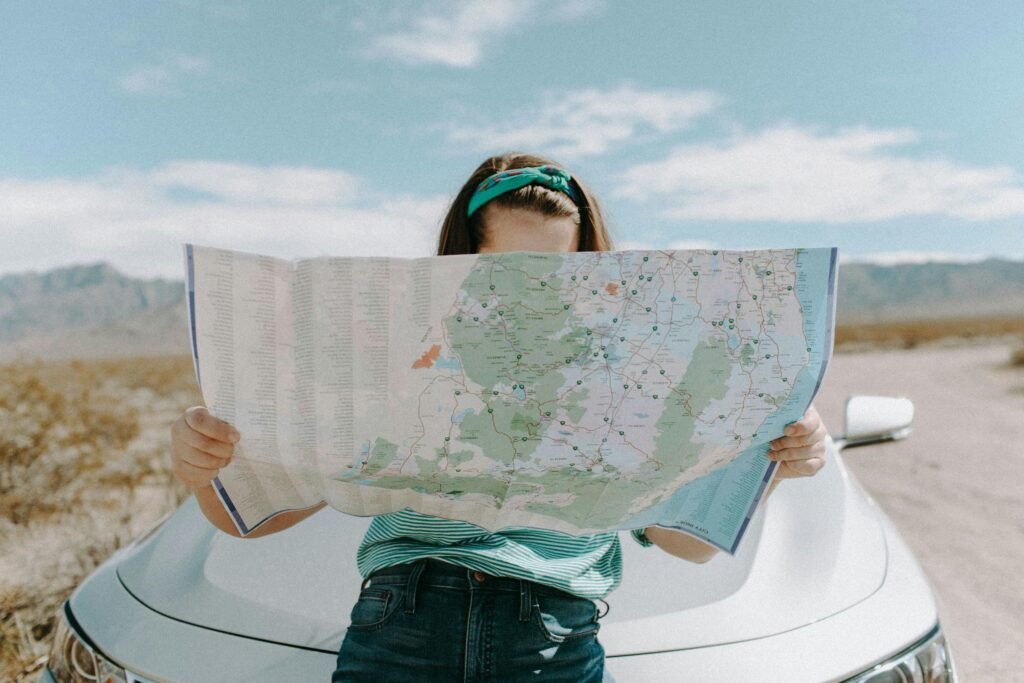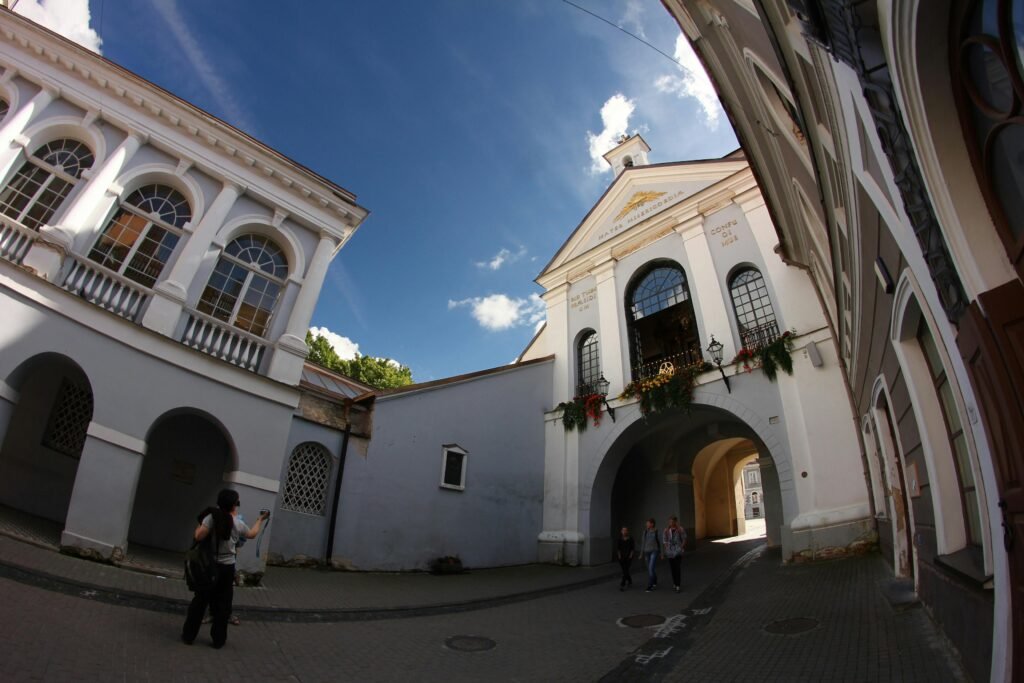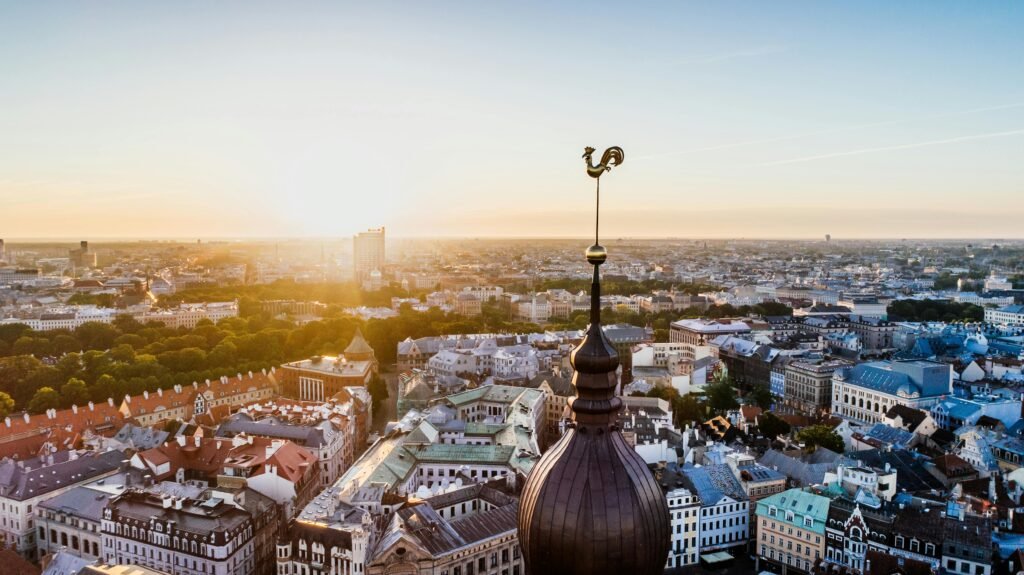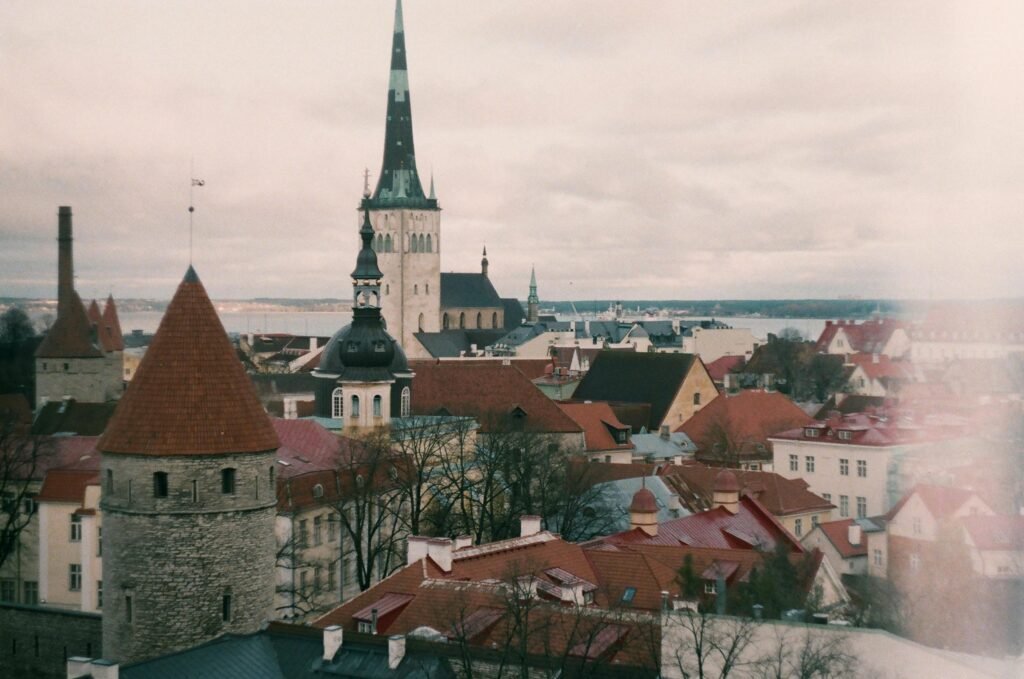Introduction to the Baltic Road Trip
The Baltic Road Trip encompasses an exhilarating journey through three captivating countries: Lithuania, Latvia, and Estonia. Each of these destinations offers travelers a distinctive experience enriched by a blend of historical significance, cultural vibrancy, and stunning natural landscapes. The allure of undertaking a road trip lies in the freedom it provides; the opportunity to explore off-the-beaten-path towns, coastal shores, and lush forests that are often overlooked by conventional tour itineraries.

As one embarks on this one-week adventure, they will encounter the rich heritage of the Baltic region. Lithuania, known for its charming old towns and beautiful lakes, presents the perfect starting point for the exploration. Subsequently, Latvia adds to the experience with its Art Nouveau architecture in Riga, myriad festivals, and pristine beaches. Finally, Estonia completes the trio, enchanting travelers with its medieval castles, advanced digital society, and vibrant seaside towns.
The itinerary is designed with diverse landscapes in mind—ranging from serene countryside roads and bustling urban centers to enchanting forests and idyllic shorelines. Each day of the road trip brings new opportunities for unforgettable local experiences, be it sampling traditional Baltic cuisine, interacting with friendly locals, or discovering historical landmarks. Travelers can anticipate moments that will linger in memory long after the journey has ended. This road trip represents a harmonious blend of nature and culture, inviting those who dare to explore and appreciate the essence of the Baltic states. It serves as a perfect opportunity to immerse oneself in three unique cultures, enabling a profound understanding of this remarkable region within a compact timeframe.
Planning Your Route: Vilnius to Riga and Tallinn
Embarking on a road trip across the Baltic states offers a delightful opportunity to explore the rich cultural heritage and stunning landscapes of Lithuania, Latvia, and Estonia. The ideal route typically begins in Vilnius, the capital of Lithuania, and winds its way north through Riga, before concluding in Tallinn, Estonia. This journey encompasses a total distance of approximately 660 kilometers, making it both manageable and enjoyable within a week’s time.

When planning your road trip, it is essential to consider the distance between each destination. The drive from Vilnius to Riga spans around 290 kilometers, taking approximately 4 hours under optimal conditions. This leg of the journey will take you through picturesque countryside and quaint villages, providing numerous opportunities for sightseeing or quick stops. Popular places to visit en route include the charming town of Užutrakis and the historic city of Panevėžys.
From Riga to Tallinn, travelers will cover approximately 310 kilometers, which typically requires about 4 to 5 hours of driving. This section of the road trip showcases beautiful landscapes, including coastal views and nature parks, making it an enjoyable experience. Notable attractions along the way include the seaside town of Pärnu, celebrated for its beautiful beaches and vibrant summer culture. Additionally, the scenic Lahemaa National Park allows for a refreshing retreat into nature.
Before hitting the road, it is crucial to factor in road conditions and traffic regulations specific to each country. Each Baltic nation has distinct driving laws, such as speed limits and documentation requirements, that must be adhered to. The best time for this road trip is generally from late spring to early autumn, when weather conditions are favorable and tourist attractions are typically open. This itinerary not only promises a rewarding journey but also paves the way for experiencing the unique charm of the Baltic states.
Day 1: Exploring Vilnius
The first day of your Baltic road trip begins in Vilnius, Lithuania’s vibrant capital known for its rich history and captivating architecture. Notably, the Old Town, a UNESCO World Heritage site, is a must-visit destination as it showcases a remarkable collection of Gothic, Renaissance, and Baroque buildings. As you wander through the cobbled streets, you will encounter significant landmarks, including the impressive Vilnius Cathedral and the charming Gitanas’ small cafés that line the plazas.

Your expedition should undoubtedly include a visit to Gediminas Tower, an iconic symbol of Lithuanian heritage. Climb to the top for stunning panoramic views of the city, where the meandering Neris River merges with the skyline of historical architecture. This experience not only offers fantastic photo opportunities but also a brief insight into the fortified history of Vilnius.
Culinary exploration is vital on your first day, as Lithuanian cuisine holds unique flavors and traditions. Stop by a local market, such as Hales Market, to sample traditional foods like cepelinai (potato dumplings) and šaltibarščiai (cold beet soup), or visit a cozy bistro to try kibinai (Kybyns), a popular pastry filled with meat or vegetables. Pair your meal with local beers or kvass for an authentic taste of Lithuanian beverages.
For accommodations, consider staying in one of the charming hotels located within the Old Town. Many of these establishments provide easy access to major attractions and local experiences. Quality service and local recommendations from hotel staff can significantly enhance your exploration of this historic city.
In summary, your first day in Vilnius promises a captivating blend of cultural heritage, gastronomic delights, and beautiful landscapes, setting a delightful tone for your Baltic road trip itinerary.
Day 2: Vilnius to Riga – The Journey
The journey from Vilnius, Lithuania, to Riga, Latvia, is a scenic drive that spans approximately 300 kilometers and typically takes around four hours without accounting for any stops. The route is straightforward, primarily following the A2 and A1 highways, and offers a delightful opportunity to experience the natural beauty and cultural richness of the Baltic region. Travelers are encouraged to take breaks at notable landmarks along the way, so as to enhance their trip.
One recommended stop is the charming town of Kaunas, located about 100 kilometers from Vilnius. Kaunas is known for its beautiful architecture, including the historic Old Town and the impressive Devil’s Museum, which showcases an eccentric collection of devil-themed artifacts. This area offers a perfect chance to stretch your legs, indulge in local cuisine, and explore the vibrant atmosphere before continuing your journey.

As the drive progresses, consider another stop at the picturesque city of Jūrmala, located on the shores of the Gulf of Riga. This seaside destination is recognized for its pristine beaches and wooden architecture, making it a pleasant location to relax and enjoy a meal or coffee by the sea. Additionally, taking a moment to stroll along the beach offers a refreshing break from driving.
When preparing for the border crossing from Lithuania to Latvia, it is essential to have your passport and vehicle registration documents ready. Travelers should be aware that both countries are part of the European Union, allowing for relatively hassle-free border crossing, though customs regulations still apply to certain goods. Familiarizing yourself with any necessary restrictions regarding duty-free items and documentation can smoothen this part of your journey.
Overall, the drive from Vilnius to Riga promises not only a satisfying travel experience but also memorable stops filled with cultural insights along the way.
Day 3: Discovering Riga
On the third day of your ultimate Baltic road trip, immerse yourself in the vibrant atmosphere of Riga, the capital of Latvia. Riga is renowned for its rich history, dynamic culture, and striking architecture, making it a must-visit destination. Begin your exploration at the iconic House of Blackheads, a stunning 14th-century guildhouse that showcases an intricate blend of Gothic and Renaissance architectural styles. This building serves as a prominent symbol of the city’s historical significance, offering a glimpse into Riga’s past.
Next, take a stroll to the Freedom Monument, an important national landmark that commemorates Latvia’s independence and resilience. The monument, which rises to a height of 42 meters, is adorned with various sculptures and inscriptions that reflect the nation’s pride and dedication to freedom. As you walk around the city, make sure to explore the charming Art Nouveau district, recognized for its beautifully ornate buildings and facades, which are considered some of the finest examples of Art Nouveau architecture in Europe. This district not only captivates visitors with its stunning design but also tells the story of Riga’s architectural evolution in the early 20th century.
Riga’s culinary scene is equally captivating, offering a blend of traditional Latvian cuisine and contemporary dining experiences. Be sure to sample local specialties such as grey peas with speck, rye bread, and smoked fish, which are available at various restaurants and eateries throughout the city. For accommodations, numerous hotels and guesthouses cater to different preferences and budgets, ensuring a comfortable stay in this lively city.
As you immerse yourself in the local culture and architecture, Riga promises an enriching experience filled with memories that will last long after the trip concludes.
Day Trip Options from Riga
Riga, the vibrant capital of Latvia, serves as an excellent base for exploring the surrounding regions. Day trips from this picturesque city unveil a mix of natural beauty, cultural treasures, and historical sites. A visit to Jurmala, a charming seaside town, is a popular choice among travelers. Located just approximately 25 kilometers from Riga, Jurmala is known for its stunning beaches and Art Nouveau architecture. Public transport options, including trains and buses, offer convenient access, with the journey taking around 30 minutes. While there, visitors can enjoy sunbathing, swimming, or strolling along the charming wooden houses that line the streets. The Dzintari Concert Hall hosts various events and performances, adding to the town’s appeal.
Another highly recommended day trip is to Sigulda, often referred to as the “Switzerland of Latvia” for its breathtaking landscapes. Situated about 50 kilometers from Riga, Sigulda can be reached via train, making it an accessible option for day travelers. Highlights include the Turaida Castle, where guests can learn about local history and enjoy panoramic views of the Gauja River valley. Adventurers may also explore the nearby bobsleigh track or traverse the scenic trails leading to breathtaking views, particularly during the fall when foliage is at its peak.
No trip to this region would be complete without a visit to Gauja National Park, Latvia’s largest national park, encompassing diverse wildlife, ancient castles, and serene nature trails. It is conveniently located near both Sigulda and Cesis, another beautiful medieval town worth a visit. Visitors can take guided tours or venture independently, with multiple trails catering to varying levels of fitness. For those wishing to extend their trip, accommodations ranging from cozy guesthouses to luxurious hotels are available in nearby areas, allowing travelers to immerse themselves in the serene Baltic landscape.
Day 5: Riga to Tallinn – Travel Insights
The journey from Riga to Tallinn spans approximately 300 kilometers and typically requires around four to five hours of driving, depending on traffic conditions and the chosen route. This picturesque drive, which connects Latvia and Estonia, offers travelers a chance to explore various points of interest along the way, ensuring the journey is as enriching as the destination itself.
One of the key attractions to consider stopping at is the scenic seaside town of Pärnu, often regarded as Estonia’s summer capital. Known for its sandy beaches and vibrant cultural scene, Pärnu is a perfect spot to take a break, enjoy a meal, or stretch your legs. Visitors can stroll through its charming parks or visit the local art galleries, making this a refreshing stop on the route to Tallinn.
Another noteworthy point of interest is the town of Viljandi, famous for its medieval ruins and scenic lake. Although slightly off the main route, it is worth the detour for those interested in discovering the deep-rooted history and natural beauty of Estonia. Travelers can enjoy the panoramic views from Viljandi Castle and immerse themselves in local heritage at various museums.
When planning your trip, it is essential to keep in mind the unique aspects of driving in Estonia. The country is known for its well-maintained roads, with traffic rules similar to those in other European nations. However, be aware of electronic toll systems that may apply on certain routes, as well as the specific requirements for vehicle registration and insurance. Furthermore, prepare for potential border control checks, as travelers crossing from Latvia to Estonia may need to show identification and registration documents for their vehicle.
This preparation minimizes potential hold-ups and ensures a smooth transition between countries, allowing travelers to enjoy the entire experience from Riga to Tallinn without undue stress. Embracing these travel insights will enhance your Baltic road trip, making it truly memorable.
Day 6: Exploring Tallinn
On the sixth day of your Baltic road trip, you will have the opportunity to explore the captivating city of Tallinn, Estonia. Known for its well-preserved medieval architecture and vibrant cultural scene, Tallinn offers a harmonious blend of history and modern vitality. Begin your day in Tallinn’s remarkable Old Town, a UNESCO World Heritage site, where cobblestone streets wind through a network of charming squares and buildings that date back to the Gothic and medieval periods. Here, you will find the iconic Town Hall, the oldest surviving Gothic town hall in Northern Europe, as well as the breathtaking Alexander Nevsky Cathedral, showcasing stunning Russian architectural influences.

Continue your exploration with a visit to Toompea Castle, a formidable fortress that has been a seat of power for centuries. Climb the viewing platforms for panoramic views of the city, particularly the beautiful skyline that juxtaposes historical structures with modern buildings. Toompea’s hilltop location allows for an impressive perspective of Tallinn’s skyline against the backdrop of the Baltic Sea.
A trip to Tallinn would be incomplete without a visit to the Kumu Art Museum, the largest and most cutting-edge art museum in Estonia. Here, you will discover both classical and contemporary Estonian art, making it a perfect stop for art enthusiasts. The museum’s design is a work of art in itself, blending seamlessly with the surrounding landscape.
After a day of exploration, consider indulging in local cuisine at one of Tallinn’s many delightful restaurants. Try traditional Estonian dishes, such as smoked fish and rye bread, or dine at modern eateries that showcase innovative takes on local ingredients. For accommodations, options range from cozy guesthouses in the Old Town to luxurious hotels offering breathtaking views of the harbor. Tallinn combines rich history and modern culture, ensuring an unforgettable experience on this remarkable Baltic road trip.
Final Stops and Reflections on the Trip
The last day of a week-long Baltic road trip culminates in the charming capital of Estonia, Tallinn. Renowned for its medieval architecture and vibrant culture, this city serves as a fitting finale to your journey through the Baltic states. Begin your final day by exploring the historic Old Town, a UNESCO World Heritage site, where the cobblestone streets, towering spires, and picturesque squares create an enchanting atmosphere. Visit the iconic Alexander Nevsky Cathedral and Toompea Castle, which provide a glimpse into the region’s rich history and cultural heritage.
As your travel through the Baltic states comes to a close, take a moment to reflect on the diverse landscapes and unique experiences encountered along the way. Each stop, from the coastal beauty of Latvia to the vibrant city life of Lithuania, offers a distinct flavor that enriches the overall journey. One can’t help but appreciate the interwoven histories of these countries, their shared past, and distinct identities, which have shaped modern-day perspectives.
In addition to sightseeing, consider indulging in some last-minute local cuisine. Restaurants throughout Tallinn feature traditional Estonian dishes made with local ingredients, allowing travelers to savor the flavors of the region one last time. Be sure to try the rye bread, Baltic herring, and delectable pastries at a local café. Before you leave, take a stroll along the scenic waterfront to soak in the serene views of the Baltic Sea, providing a perfect backdrop for your concluding moments in the area.
As you prepare for your return journey, it may be beneficial to take stock of your experiences and jot down any highlights or revelations encountered during this road trip. A week spent traversing the three Baltic nations offers not only newfound appreciation for their beauty but also insights into the resilience and warmth of their people. These memories will undoubtedly enhance your reflections long after the trip concludes, making this journey an unforgettable chapter in your travel adventures.
Practical Tips and Resources for Your Baltic Adventure
Planning a road trip through the Baltic countries—Estonia, Latvia, and Lithuania—requires an understanding of various practical aspects to ensure a smooth journey. Start by familiarizing yourself with driving regulations in each country. All three nations have adopted European Union traffic laws, which generally stipulate that seat belts are mandatory, and the use of mobile phones while driving is prohibited unless a hands-free device is used. Additionally, speed limits are typically 50 km/h in urban areas, 90 km/h on rural roads, and 110 km/h on expressways, though these limits can vary, so it is wise to pay attention to road signs.
Safety should always be a priority when traveling. Ensuring that your vehicle is well-maintained before departure can prevent many unforeseen issues. Moreover, having a roadside assistance plan can provide peace of mind in case of unexpected breakdowns. Travelers should also take into account the differing currencies used across the Baltic region. Estonia uses the Euro, Latvia is on the Euro, and Lithuania also transitioned to the Euro, making transactions straightforward for visitors from other Eurozone countries. However, it’s important to remain aware of exchange rates if coming from nations that do not use the Euro.
For your journey, consider downloading navigation apps such as Google Maps or Waze, both of which provide excellent route planning and real-time traffic updates. Accommodation options range from hotels to charming guesthouses, and platforms like Booking.com or Airbnb can be useful for securing lodging in advance. Before embarking on your Baltic road trip, check resources such as the official tourism websites for Estonia, Latvia, and Lithuania, which offer detailed insights into local attractions, cultural events, and practical travel advice.



